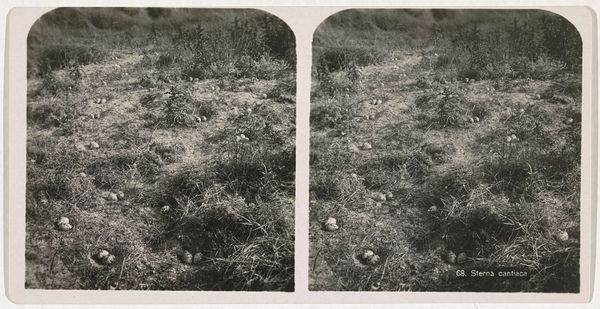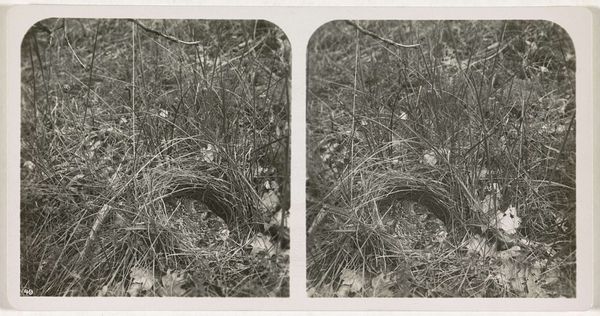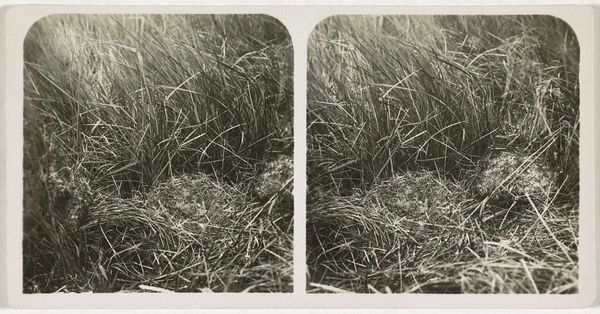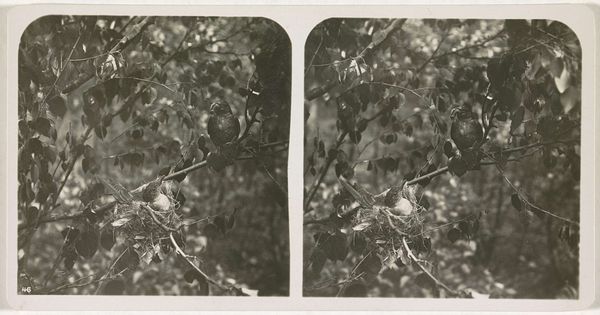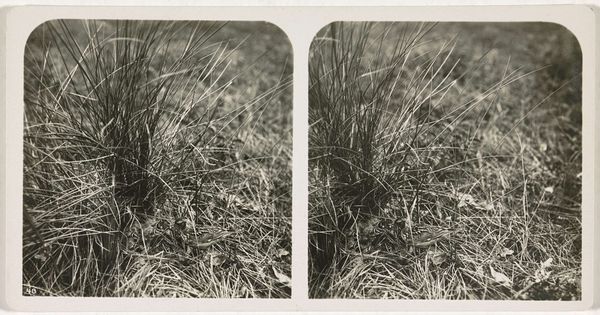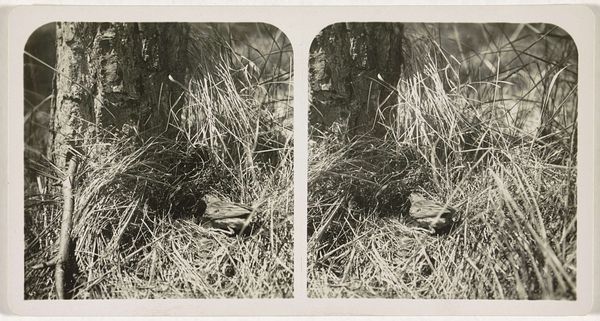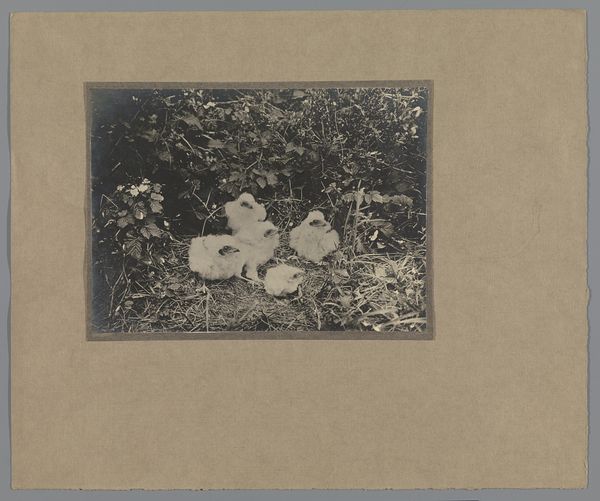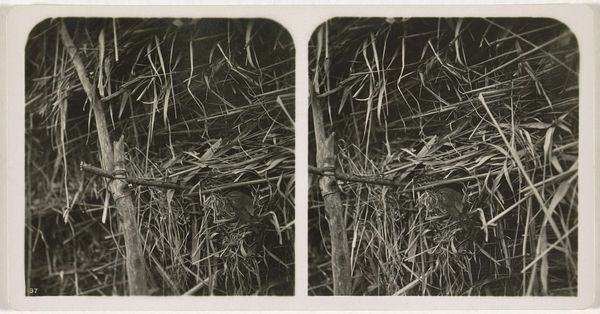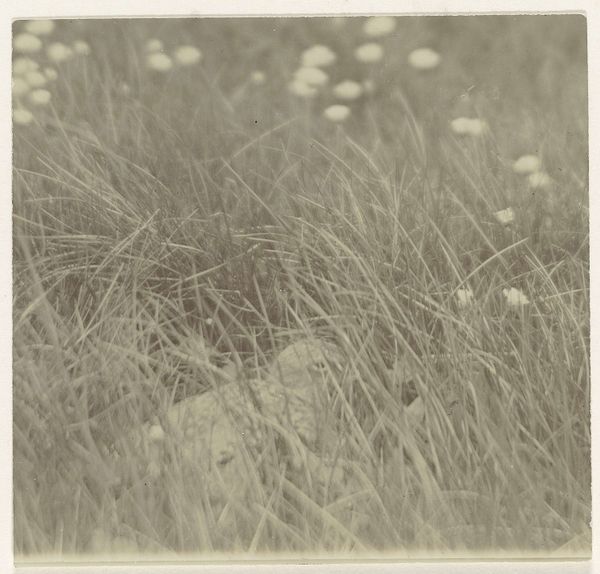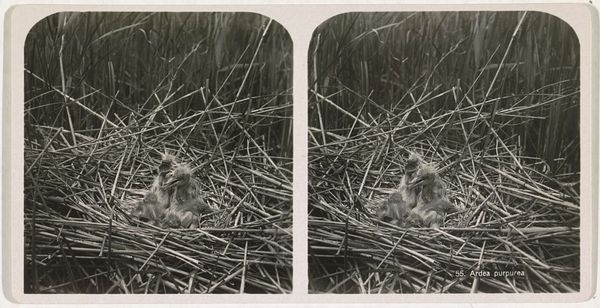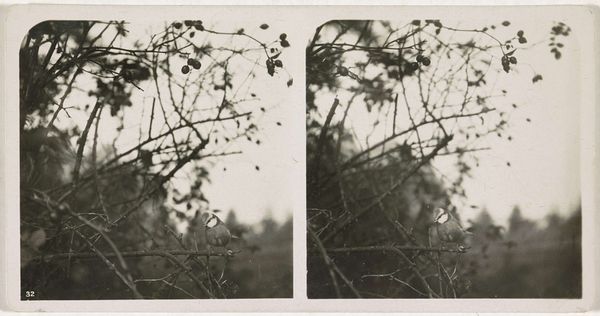
photography
#
still-life-photography
#
natural shape and form
#
organic shape
#
landscape
#
photography
#
realism
Dimensions: height 86 mm, width 165 mm
Copyright: Rijks Museum: Open Domain
Editor: This is "Twee boomleeuwerikken naast nest met jongen," or "Two Tree Pipits Beside Nest with Young," taken sometime between 1870 and 1940 by Adolphe Burdet. It's a photograph housed here at the Rijksmuseum. It's very intimate, capturing this nest amidst blades of grass. How would you interpret the public role of this artwork? Curator: I see this photograph as an early example of staged nature photography, quite popular in that era. The act of capturing these pipits isn’t simply documenting wildlife. It’s very controlled and staged, in ways that echo back to a very idealized and pastoral sense of nature, something we see time and time again during this period in Europe, meant for viewing pleasure and didactic display. How do you see this tableau reflecting a particular attitude towards the environment during that time? Editor: That's interesting! I hadn't considered the element of staging. Knowing that, I can see it perhaps representing a desire to control and understand the natural world through observation and categorization. Do you think this approach to photography changed the public’s perspective on nature? Curator: Certainly. Early nature photography such as this would have made the previously unseen world of birds and nests accessible to a wide audience, influencing public perceptions and potentially fueling scientific interests and conservation efforts, but also fostering this desire to manipulate the environment to fit the aesthetics and narrative that those in power were hoping to construct. But there is an argument that there is no “pure” unaltered view into these subjects, to some degree or another. What do you take away from looking at it knowing its origins? Editor: I see now the role that photography played in shaping public opinion towards the natural world, presenting it in a way that was accessible and engaging but ultimately mediated and curated. A lot to ponder about how what we consider nature imagery came to be!
Comments
No comments
Be the first to comment and join the conversation on the ultimate creative platform.
